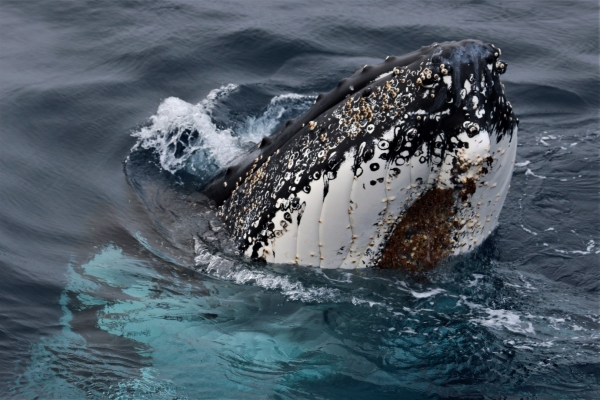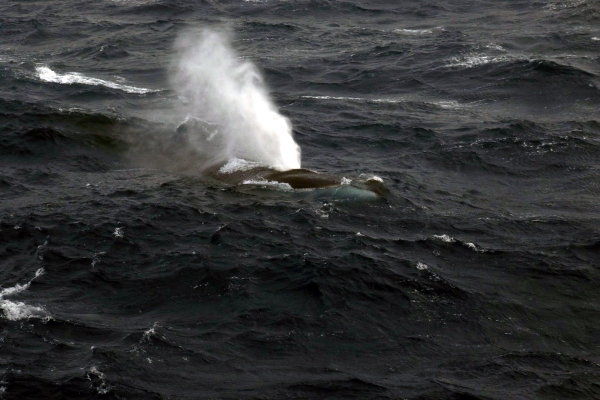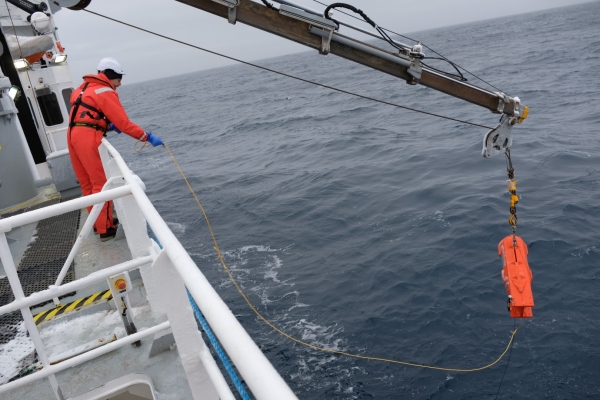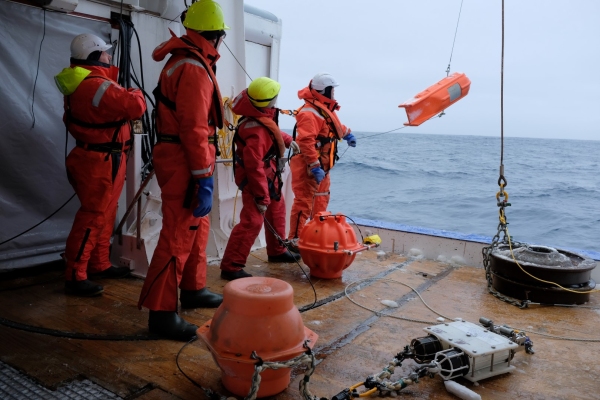A couple of days ago we deployed the last of three long-term passive acoustic monitoring moorings, as a collaboration between the Ross-RAMP MBIE Endeavour project and The Australian Antarctic Division.
This is part of a global effort to learn more about whales in the Southern Ocean via the Southern Ocean Research Partnership, with several countries deploying similar equipment around Antarctica in recent years. The three moorings we have deployed will record whale vocalizations for the next year until the 2019 Tangaroa voyage comes back to pick them up. They are tuned to pick up a wide range of whale song frequencies, but one is specifically aimed at listening for blue whale calls, while the other two are tuned for sperm whales.
The moorings have been deployed at depths from 500-1500 m on the northern flank of the Iselin Bank in the Ross Sea, on Scott C Seamount, and on the Pacific-Antarctic Ridge.
Scientists back on land use the acoustic data to understand which species are in these areas at specific times. The number of calls can also be used to assess how many whales are in an area at one time. Individual whales can be distinguished by their call so these data paint a picture of who is where, at what time of year, and within as well as between species.





